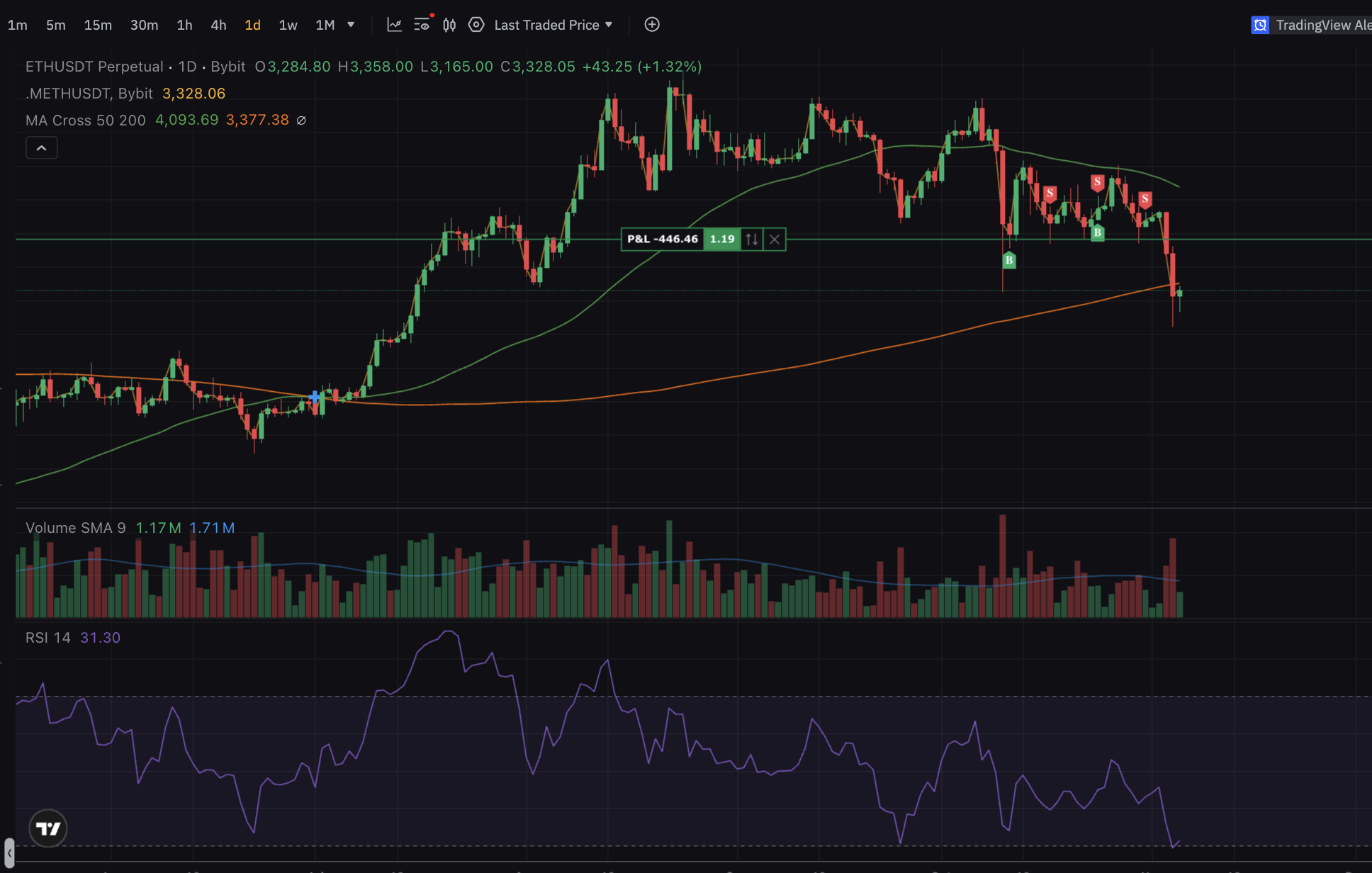Covered calls are among the most reliable tools for extracting yield in volatile markets. Still, when prices fall sharply, even disciplined positions face pressure. The decision then shifts from profit maximization to risk control and capital efficiency.
In this article, we’ll walk through practical ways to repair a broken covered call, especially when the underlying asset has crashed and the position is deep in the money.
At Terramatris, we primarily trade crypto options, so the examples focus on assets like Ethereum — but the same principles apply to traditional stock covered calls as well.
1. Rolling Down the Call
When the underlying declines, the short call’s value drops. Buying it back and reselling at a lower strike increases income but sacrifices potential upside if prices recover. It’s a quick income fix, not a long-term solution.
2. Ratio Rolling (Adding Lower Calls)
Selling an additional lower strike call can speed up premium recovery but doubles exposure if the market reverses. It’s a tactic that rewards precision timing and disciplined risk sizing.
3. Closing and Re-Entering via Short Puts
Closing the covered call and pivoting to short puts allows traders to maintain premium flow while resetting exposure lower. It’s often cleaner when volatility remains high and directional conviction is low.
At Terramatris, we operate under a simple principle: Income first, precision later.
We’re comfortable selling aggressive calls below breakeven to maintain premium inflow — but only when risk/reward justifies it. Our breakeven on ETH is roughly $4,250, and we’re currently evaluating selling short-term calls with $3,600–$3,800 strikes while the market stabilizes around $3,200–$3,300.
This approach acknowledges near-term downside risk while extracting yield from elevated implied volatility. If the market recovers and ETH closes above the strike:
- Assignment at $3,600–$3,800 would effectively realize a controlled loss versus our original $4,250 entry.
- From there, we’d re-enter exposure via short puts, likely around $3,000–$3,200, collecting premium while positioning to rebuild ownership at a better cost basis.
This keeps the capital working without forcing early exits or reactive hedges.

When ETH plunged from ~$4,100 to $3,200, our 1 ETH covered call was deep underwater relative to the initial entry. Rather than panic-selling, we analyzed the probability curve:
- At-the-money IV was above 80%, creating strong short premium opportunities.
- Selling 1-week calls around $3,600–$3,700 would yield roughly $38–$56 per contract, translating to a 1–1.5% return on notional for a single week.
That’s sufficient to reduce the effective cost basis toward $4,200 even if price drifts sideways. If assigned, the follow-up short put cycle continues the yield chain without margin strain.
We’ve long maintained that leverage is a double-edged sword. It amplifies gains in quiet markets but can destroy capital during volatility spikes.
As the Terramatris portfolio grows, our objective is clear:
- Keep leverage lower, ideally under 1.2× net exposure.
- Prioritize liquidity and optionality over absolute yield.
- Let compounded option income grow the portfolio organically, rather than force size with borrowed capital.
Reducing leverage allows us to survive drawdowns intact — which, in option writing, is the real competitive edge.
Covered call “repair” isn’t about recovering every lost dollar — it’s about managing premium flow and risk posture intelligently. At Terramatris, we remain patient. We’re evaluating short calls between $3,500–$3,600, not rushing to sell. If assignment occurs, we’ll pivot to short puts near $3,000–$3,200 to re-establish long exposure with lower basis and continued yield.
In volatile markets, survival and steady premium accumulation matter more than speed.
